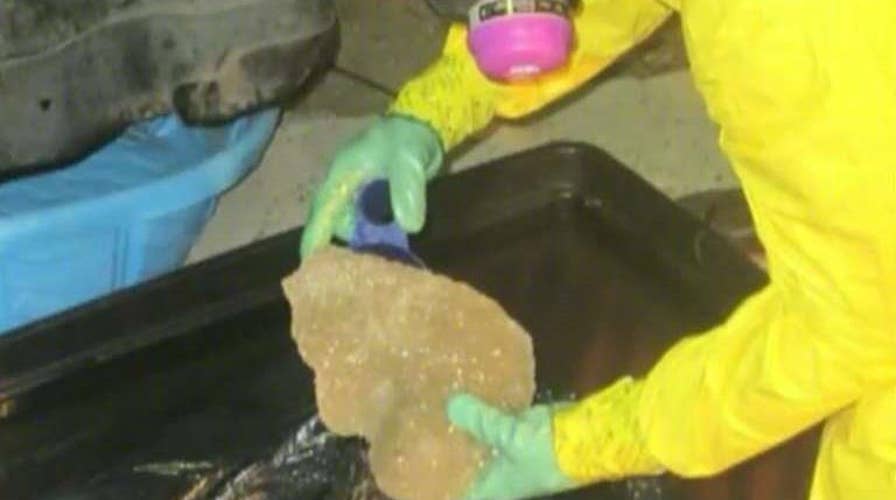Illegal immigration down, drug smuggling up at the border
Sources say the U.S. seizes less than 50 percent of illegal narcotics crossing the border; national correspondent William La Jeunesse reports from Los Angeles
The enthusiasm felt by Border Patrol agents following news of President Trump’s strong stance on border and immigration enforcement is slowly dissipating as the reality sinks in that actual enforcement of stronger rules may not be changing much from the Obama years.
Agents hoped to be able to return to the days where they could inspect the immigration status of suspicious individuals at transportation hubs, jails or even businesses -- not only as an immigration enforcement measure, but to prevent terrorism.
According to some agents, there is a general feeling of a "disconnect" between what President Trump and Homeland Security Secretary John Kelly both say they want and expect -- and what is actually happening at the Border Patrol operational level.
BORDER PATROL SEIZES 12 POUNDS OF HEROIN AFTER CHASE
One major issue is what is perceived as the continued foot-dragging to appoint the three operational heads of the agency, all of whom continue to have “acting” in front of their titles:
Kevin McAleenan, acting commissioner of U.S. Customs and Border Protection; Ron Vitiello, acting deputy commissioner of Customs and Border Protection and Carla Provost, acting Chief of the U.S. Border Patrol.
Brandon Judd, president of the National Border Patrol Council, said this uncertainty contributes to confusion among field agents who don’t know who is actually going to lead the agency.
McAleenan was nominated for the post in January but has not had a Senate confirmation hearing scheduled. And where McAleenan goes, so too will Vitiello and Provost, whose positions do not need Senate approval.
There is a sense among agents that nobody wants to make sweeping changes until the leadership positions are permanent.
Dan Hetlage, a spokesman for Customs and Border Protection, would not comment on the complaints.
BORDER WALL FUNDING INCLUDED IN TRUMP'S BUDGET PLAN, MULVANEY SAYS
Terence Shigg, president of the National Border Patrol Council, Local 1613, said the Border Patrol leadership has been hands-off even though Trump has vowed a zero-tolerance approach at the border.
“There seems to be no real reason for this, other than a group of senior Border Patrol leadership who wish to just go along to get along,” Shigg said.
That’s why, Shigg said, there is a business-as-usual attitude in the agency.
The plunge in apprehensions at the border has been heralded as a significant early policy success by the new administration. Apprehensions are down more than 61 percent since the January inauguration – but not because of any new Border Patrol initiative. Many credit Trump’s tough rhetoric for being a deterrence to border crossers.
According to data on the Border Patrol website: In 2016, from January through the end of April, there were 121,235 apprehensions, compared to 47,573 over the same period this year.
Trump is the only presidential candidate the National Border Patrol Council has ever endorsed. Agents still have confidence in him, Judd said, but that could change if aggressive enforcement does not begin happening soon.
Judd said the controversial “catch-and-release” policy, where agents release illegal immigrants once they are apprehended, is still occurring in Immigration and Customs Enforcement. Border Patrol ended the “catch-and-release” shortly after Trump became president.
“We all thought on January 25, with the signing of the Border Security Executive Order, that catch-and-release would end,” Judd said. “ICE is still walking people out the door without cases being adjudicated and our agents are questioning: ‘What’s the point?’”


